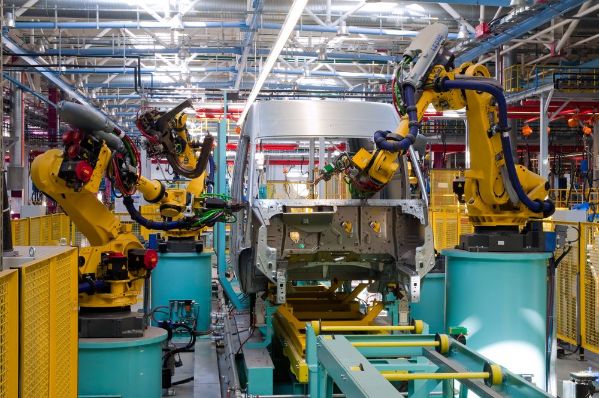4 Enclosure Cooling Methods that Prevent Plant Shut-Down

In industrial facilities, electronic equipment is frequently used for motor control, and most machines are PLC controlled. This use of electronic equipment has increased electrical enclosure heat loads because of the high heat dissipation characteristics of electronic equipment. At the same time, electronic equipment is susceptible to malfunction if allowed to get too hot, so it is widely accepted that electrical enclosure temperatures are kept below 100 ºF (37 ºC) to limit the possibility of unpredictable behavior or failure that could lead to a plant shut-down.
The high heat load of electronic equipment means that the practice of using natural ventilation to cool electrical enclosures is rarely adequate and this has resulted in the widespread introduction of more advanced enclosure cooling methods. With more advanced enclosure cooling methods, you can be sure you prevent electrical equipment failure that leads to a halt in plant operation. Here are four methods used to keep electrical enclosures cool and ensure electrical equipment does not result in shut-down.
Filtered Fans
The simplest solution is to use fans to remove waste heat and to circulate ambient air through the enclosure. This solution is effective provided ambient air temperatures are moderate, enclosures are well shaded, and the internal heat load is low. Filters should be used to keep equipment clean and need to be cleaned or replaced at regular intervals. Cooler air is blown into the bottom of the enclosure, becomes hot, and exits at the highest point. Care must be taken to ensure that the fans provide sufficient airflow to remove the heat generated by the equipment.
Air-to-Air Heat Exchangers
If moisture, chemical vapor, or excessive dust is present, enclosures must be sealed, rendering fan assisted ventilation impractical. An innovative solution is the use of closed loop heat pipe technology. A heat pipe absorbs the heat inside the enclosure and transfers it to the outside using a thermally conductive, phase-changing liquid under partial vacuum. In the enclosure, the liquid absorbs heat and converts to a vapor. This vapor moves to the other end of the pipe outside the enclosure, transfers the heat to the outside, and changes back to a liquid. The cycle repeats continuously with no moving parts, which makes air to air heat exchangers a relatively low-maintenance solution. The only components that require electricity are two small fans, which consume very little energy.
Air-to-Water Heat Exchangers
Used in conjunction with a chilled water supply, Air-to-Water Heat Exchangers are capable of providing sub-ambient cooling. The internal components of Air-to-Water Heat Exchangers are completely encased within a sealed enclosure, providing maintenance free closed-loop cooling. Air-to-Water Heat Exchangers are ideal for the dirtiest industrial environments where oil mist, dust and dirt would quickly clog the filters of air conditioners or air-to-air heat exchangers. Metal grinding and stamping, automotive brake plants, flour milling and mining operations are all examples of applications well-suited for Air-to-Water Heat Exchangers. Food processing, in particular meat and poultry processing plants where frequent wash-downs are normal, are ideal applications for Air-to-Water Heat Exchangers. Other popular applications for Air-to-Water Heat Exchangers include agricultural and golf course irrigation and water/waste-water treatment.
Enclosure Air Conditioning
In hot, harsh environments where the enclosure heat loads are substantial, the use of low capacity enclosure cooling methods is unfeasible and the only realistic solution is the utilization of an enclosure air conditioner. These air conditioners are designed to work with sealed cabinets and prevent the ingress of moisture, dirt, or vapor. Capacities vary from 1,000 BTU to 20,000 BTU and models are available for standard NEMA 12 enclosures or NEMA 4 and 4X enclosures for harsh and corrosive environments. Additional corrosion and rain protection packages are available.
Enclosure Cooling Increases Equipment Reliability
The increased heat load of electrical enclosures brought about by the greater use of electronics as well as by the higher enclosure packing densities now employed has dictated the use of enclosure cooling. Several versatile enclosure cooling methods can be used to ensure electrical enclosures are kept cool under all operating conditions and to prevent an unplanned plant shut-down. For additional security, facilities exist for the installation of remote alarm systems, or alternatively, to link the digital controller to a remote web server that can simultaneously monitor several enclosures. This ensures that maintenance personnel are immediately notified of any malfunction to prevent unplanned incidents becoming plant outages.


